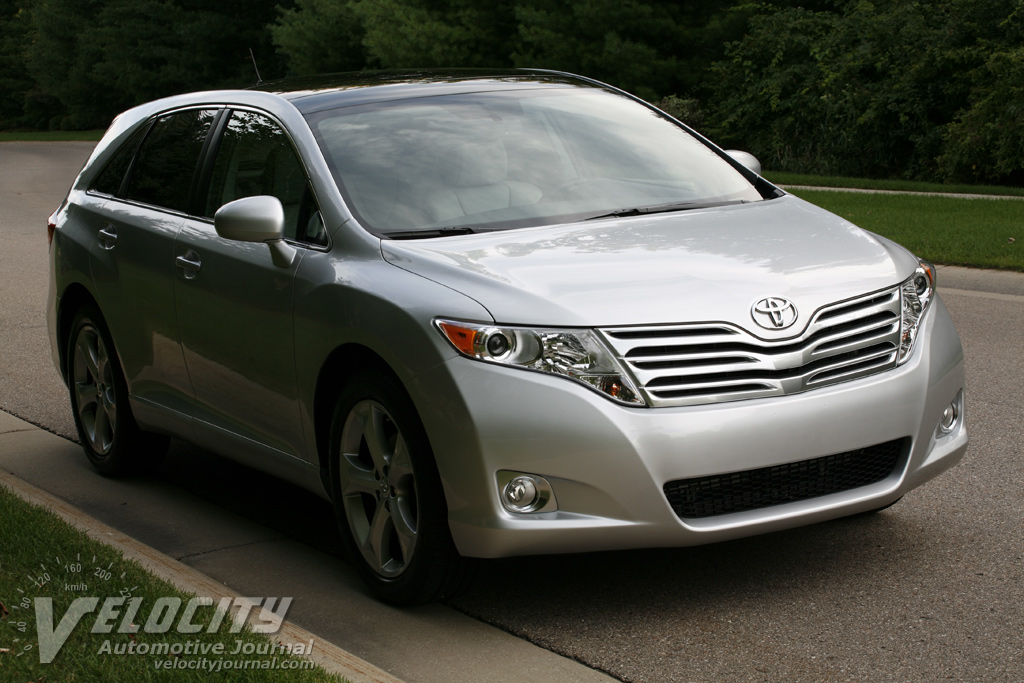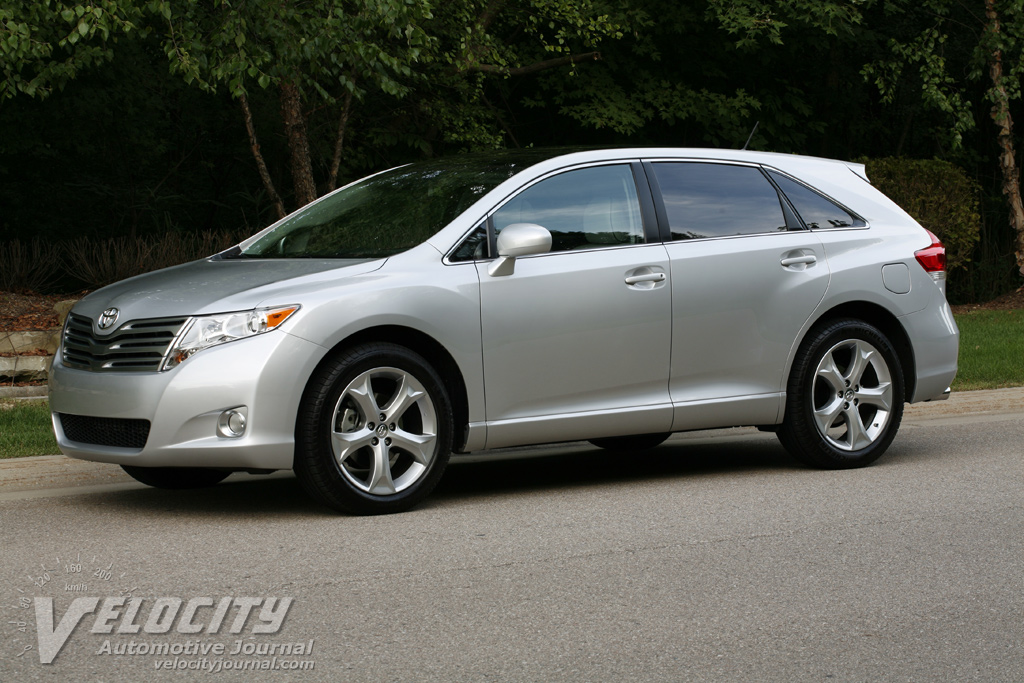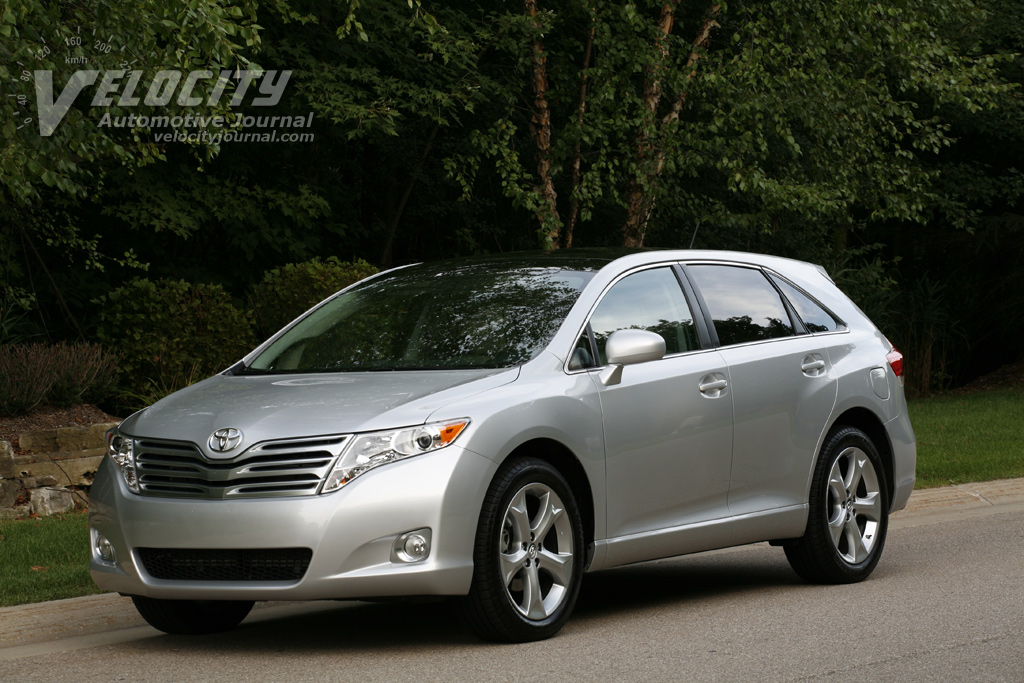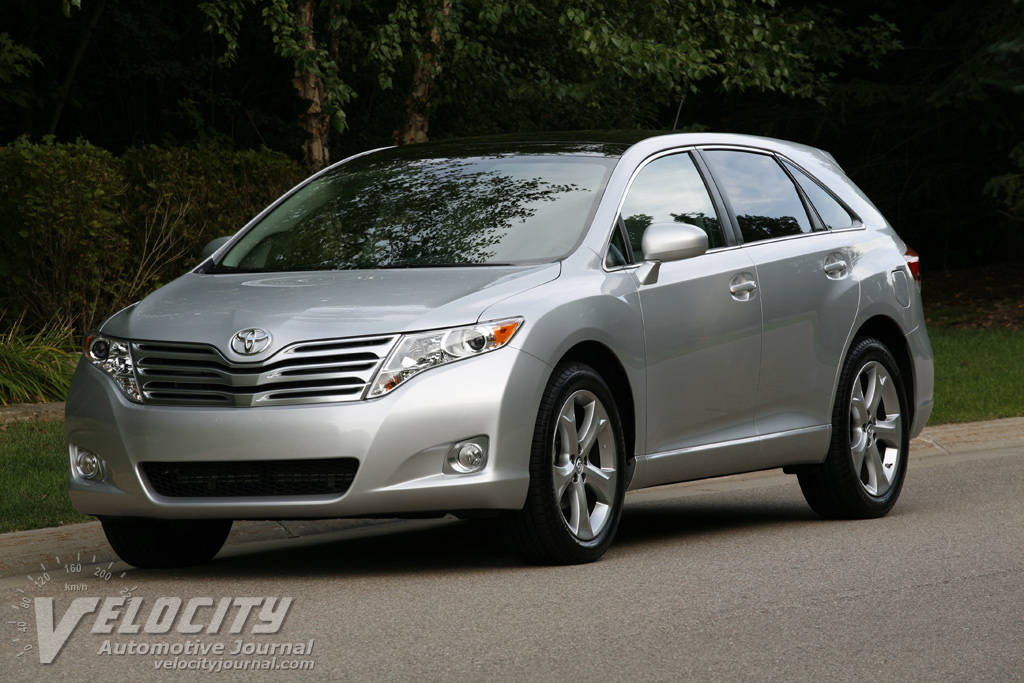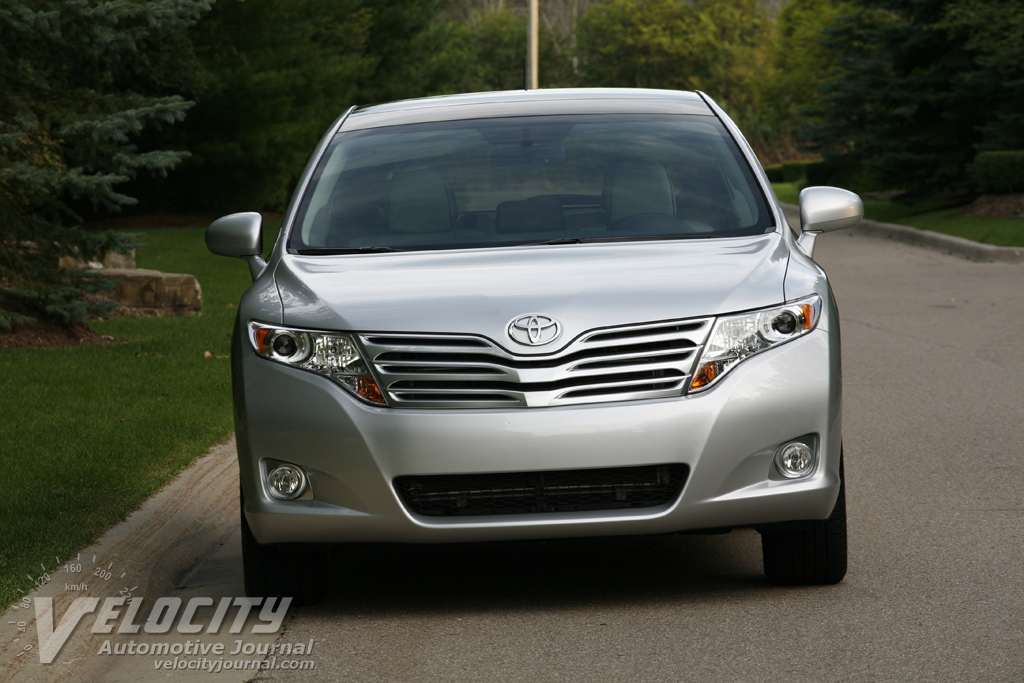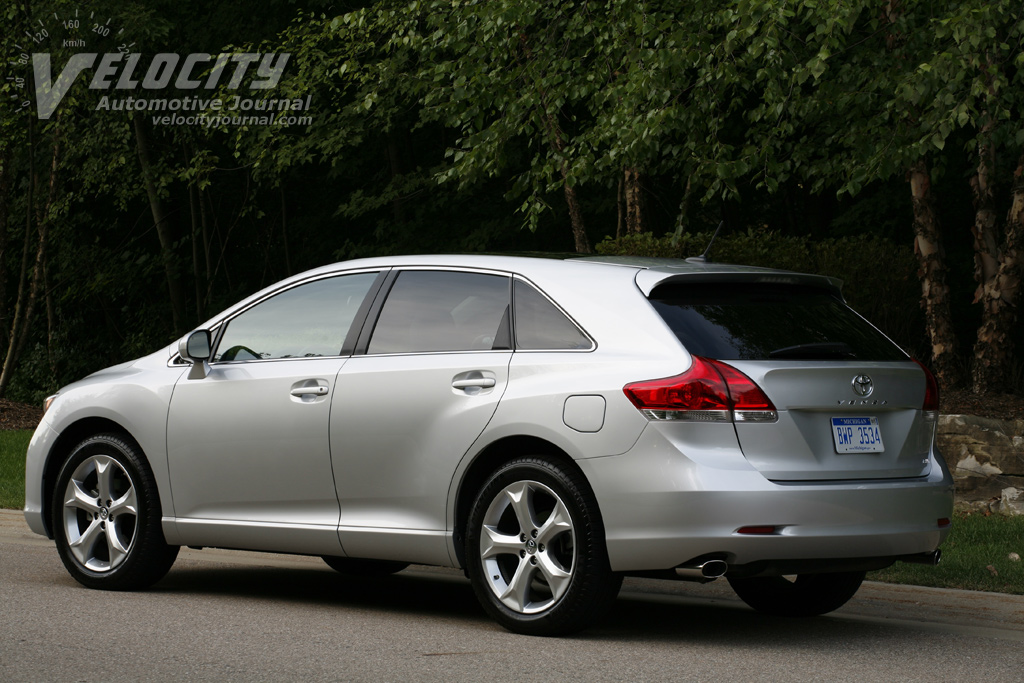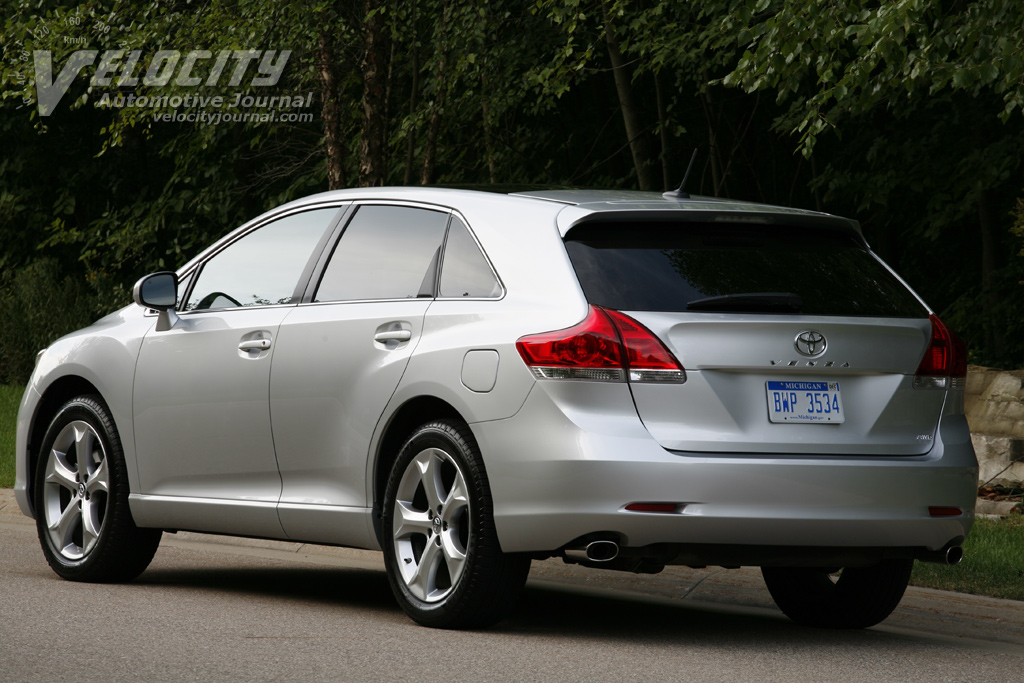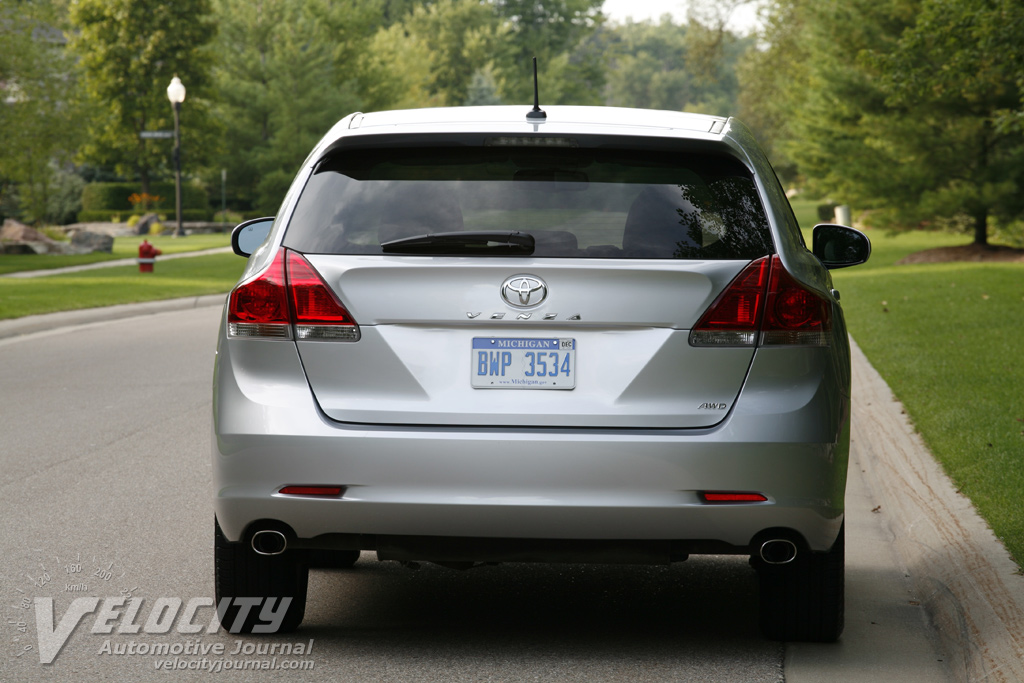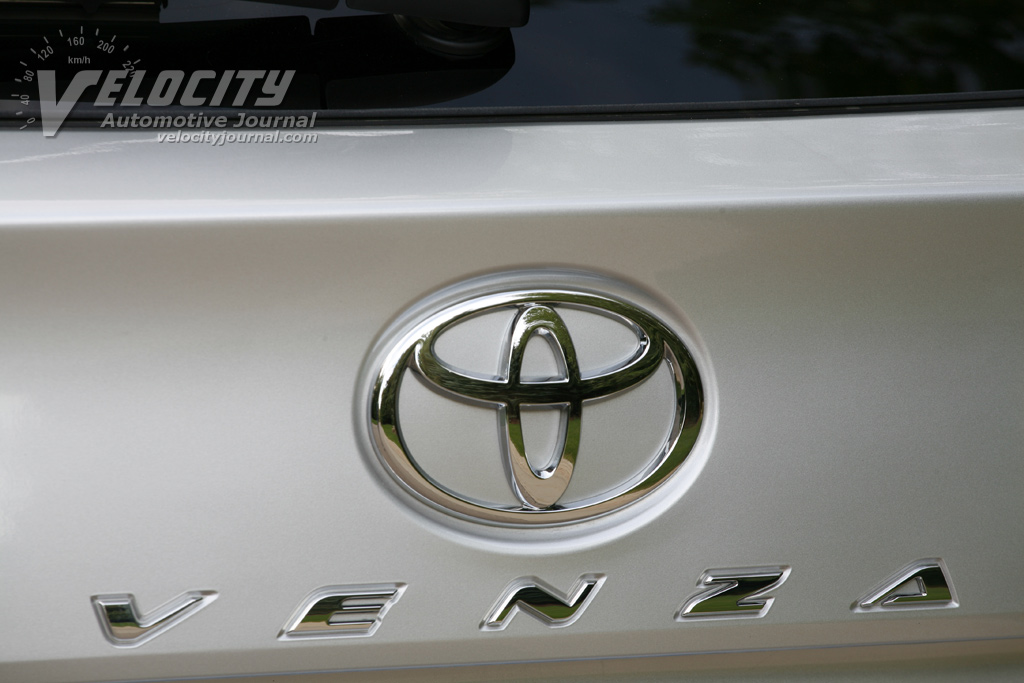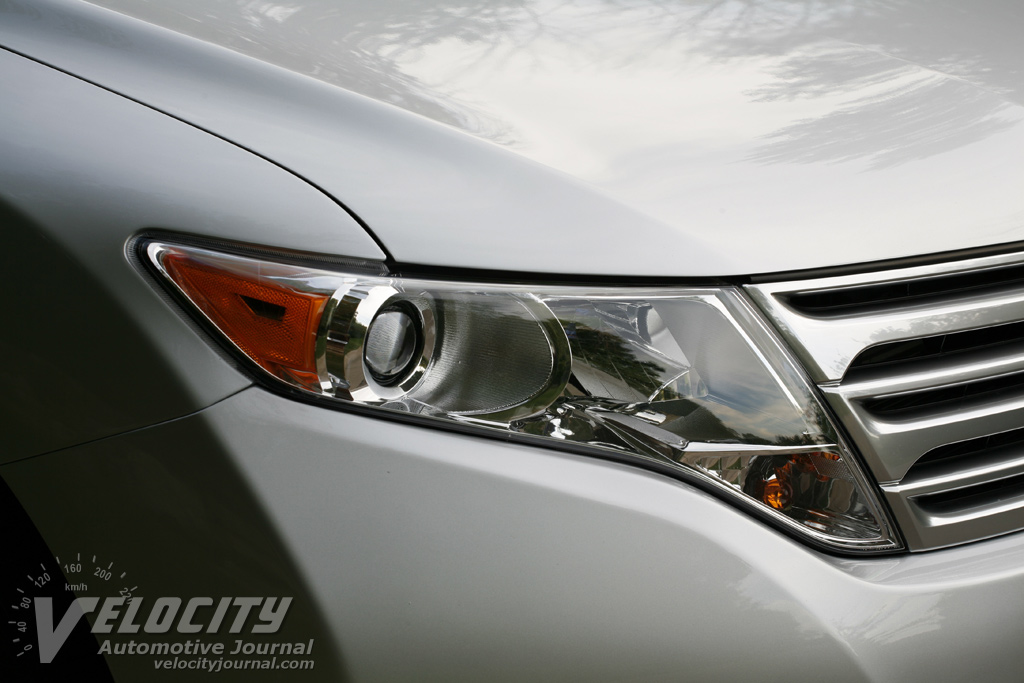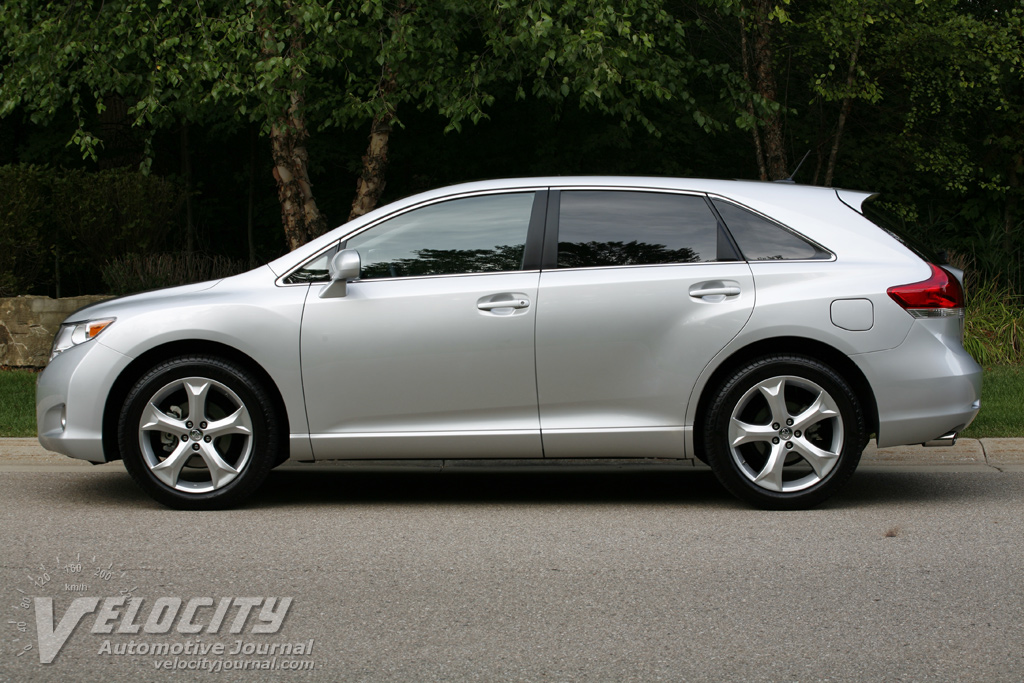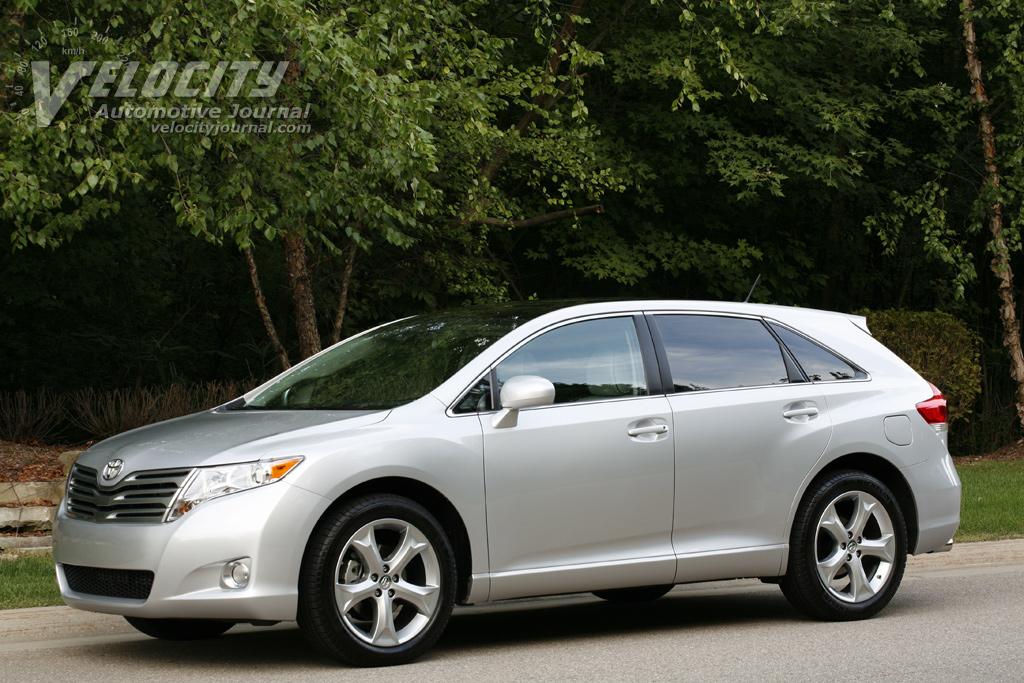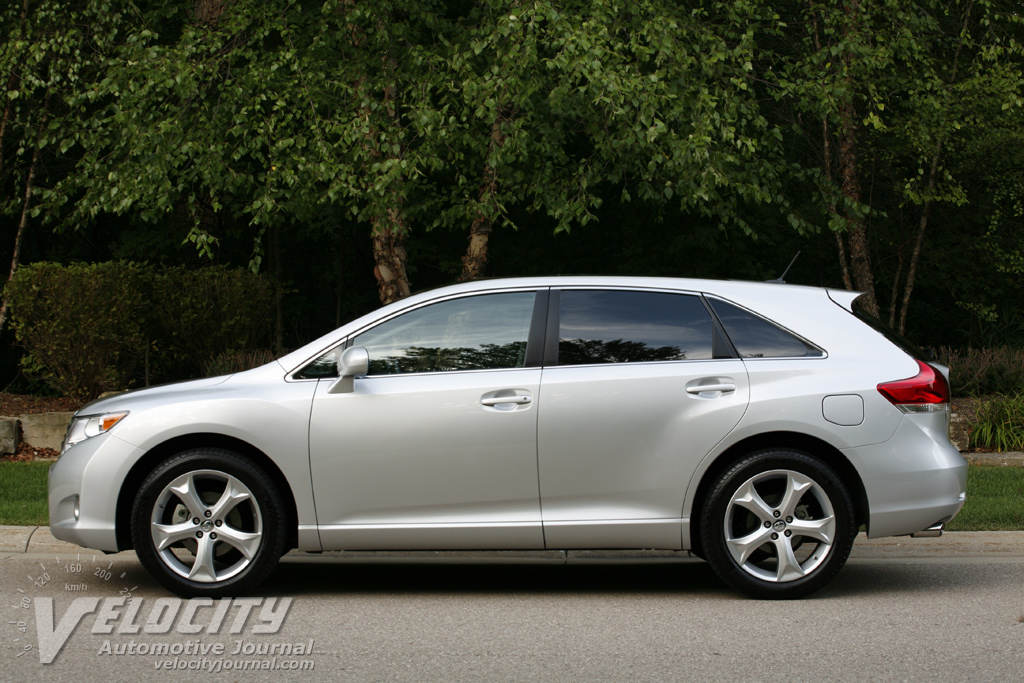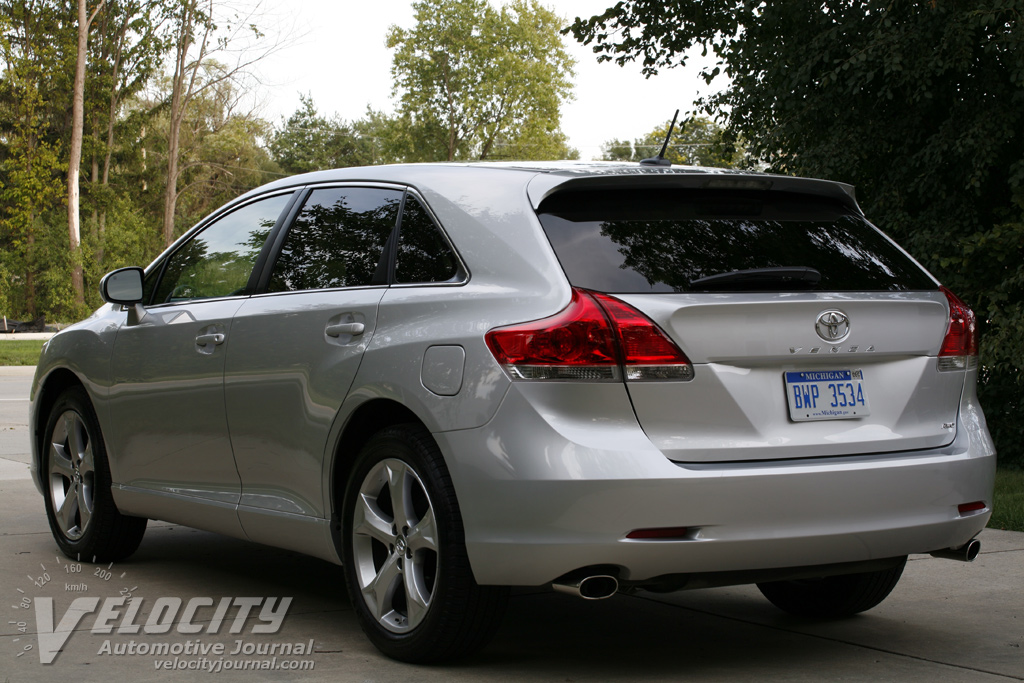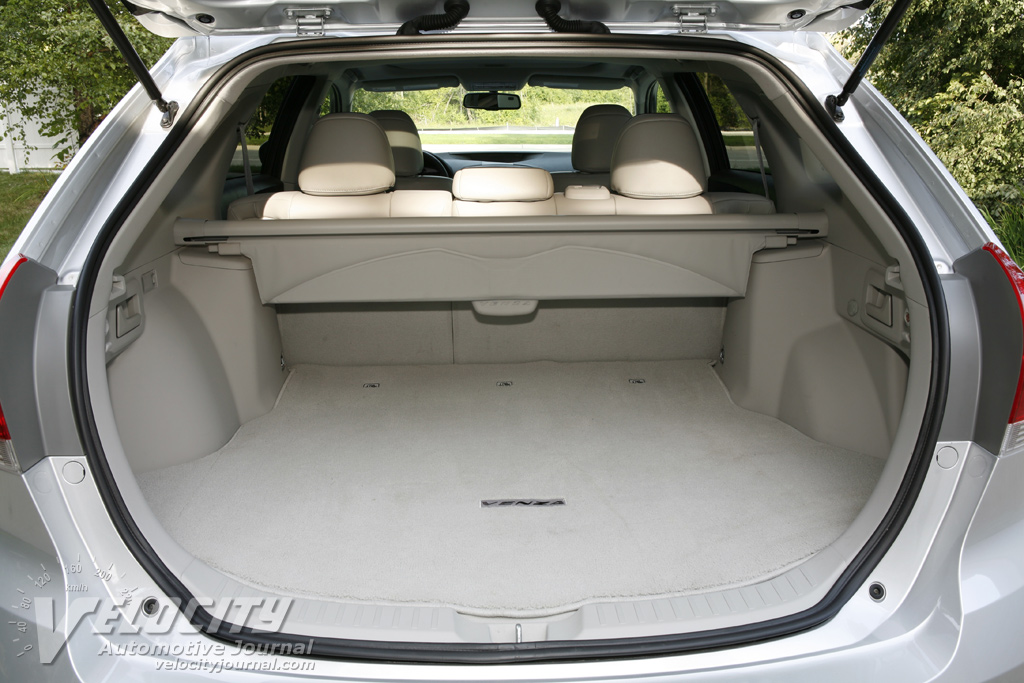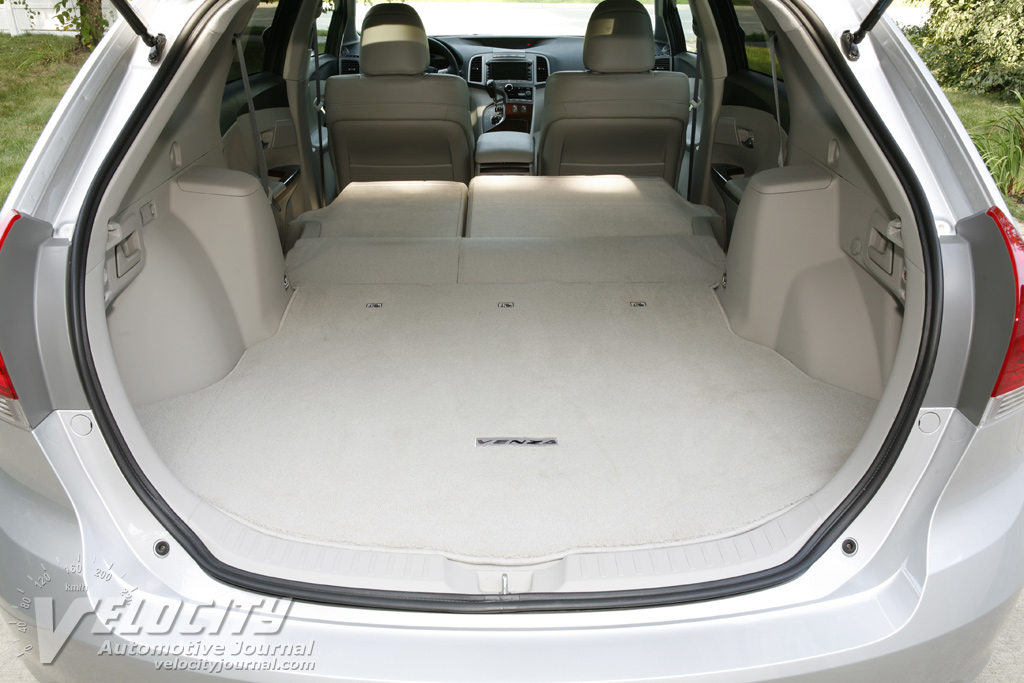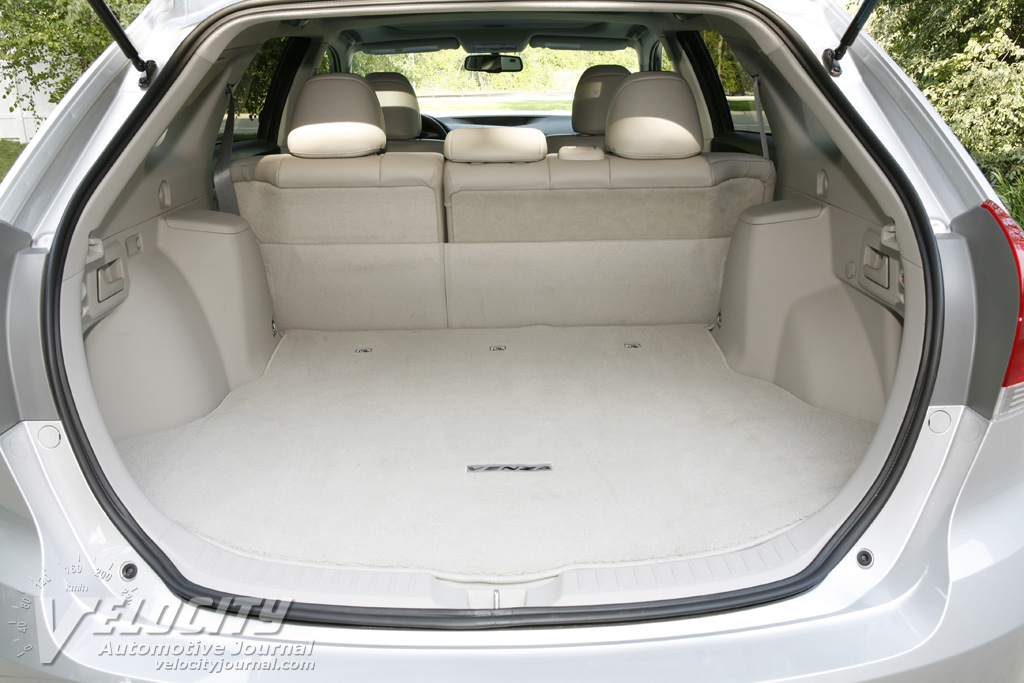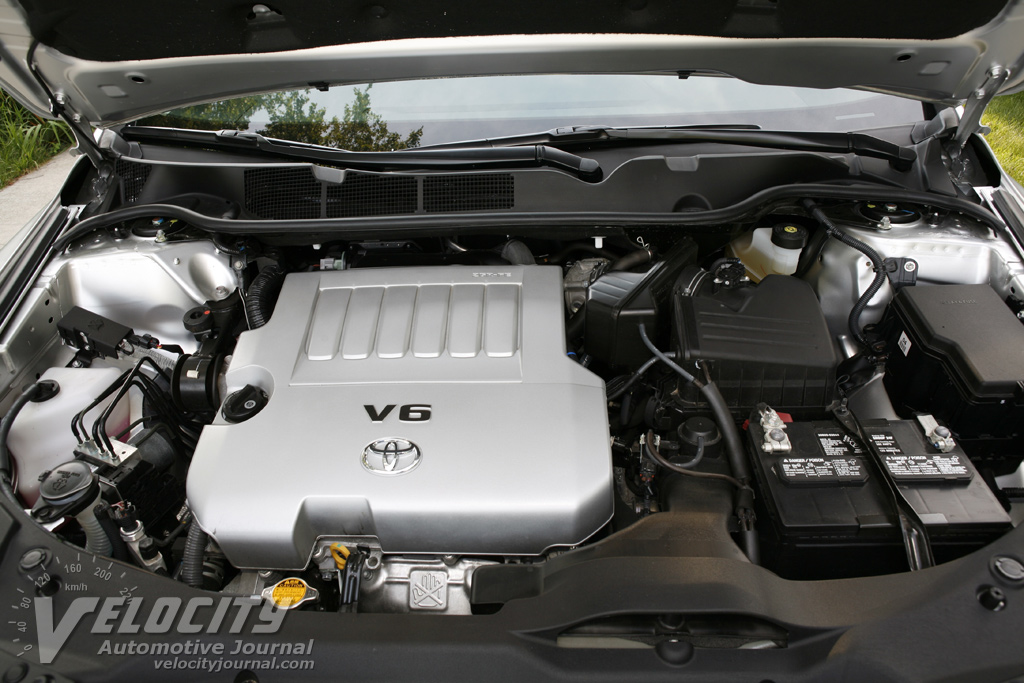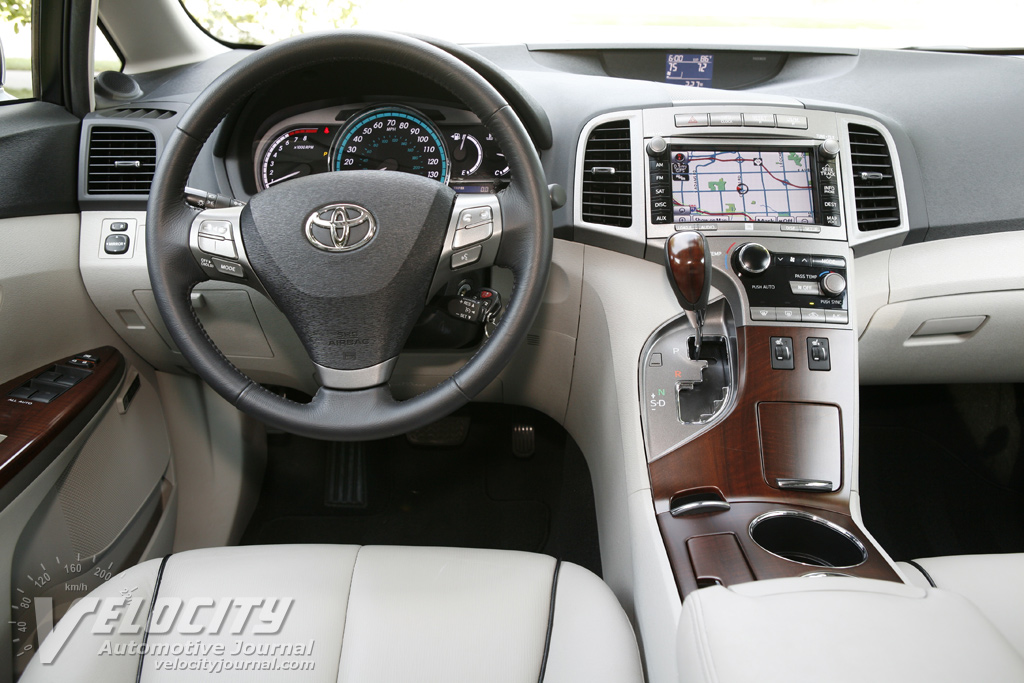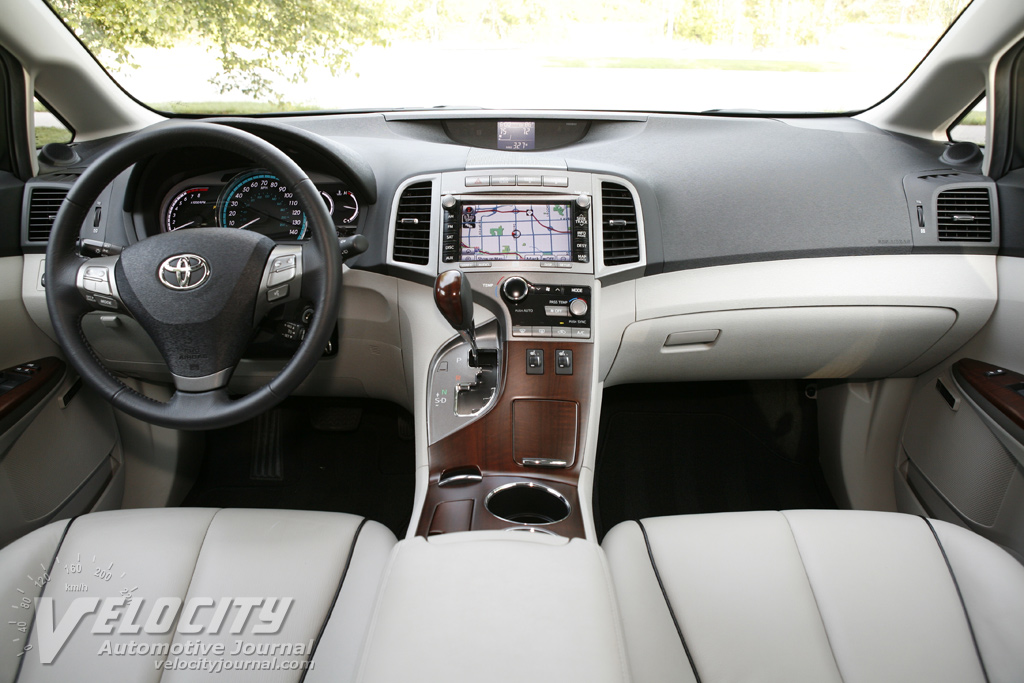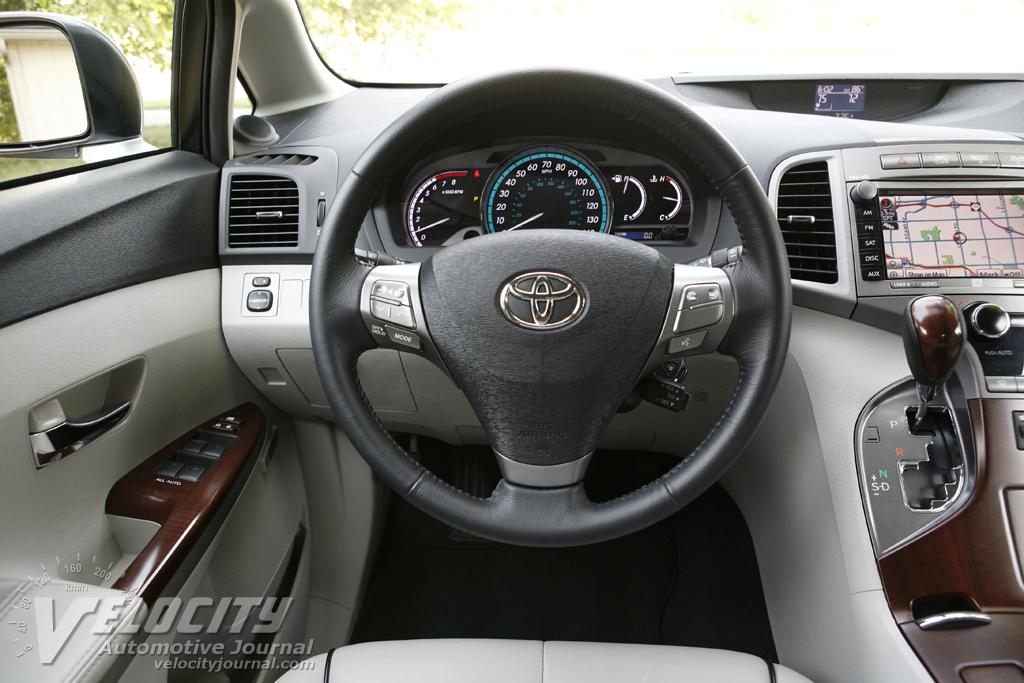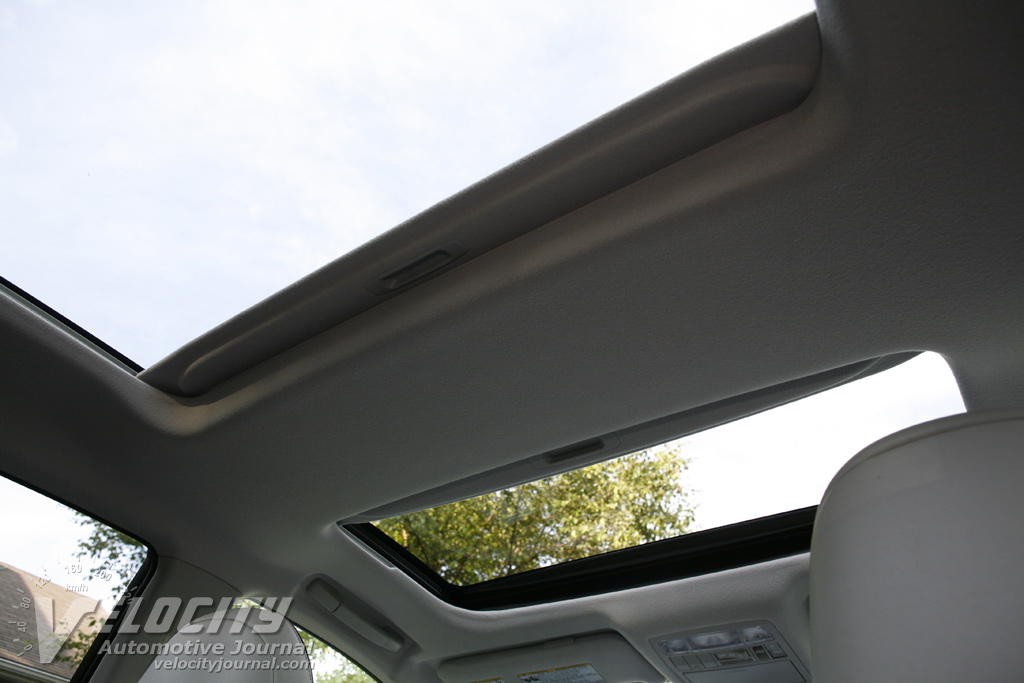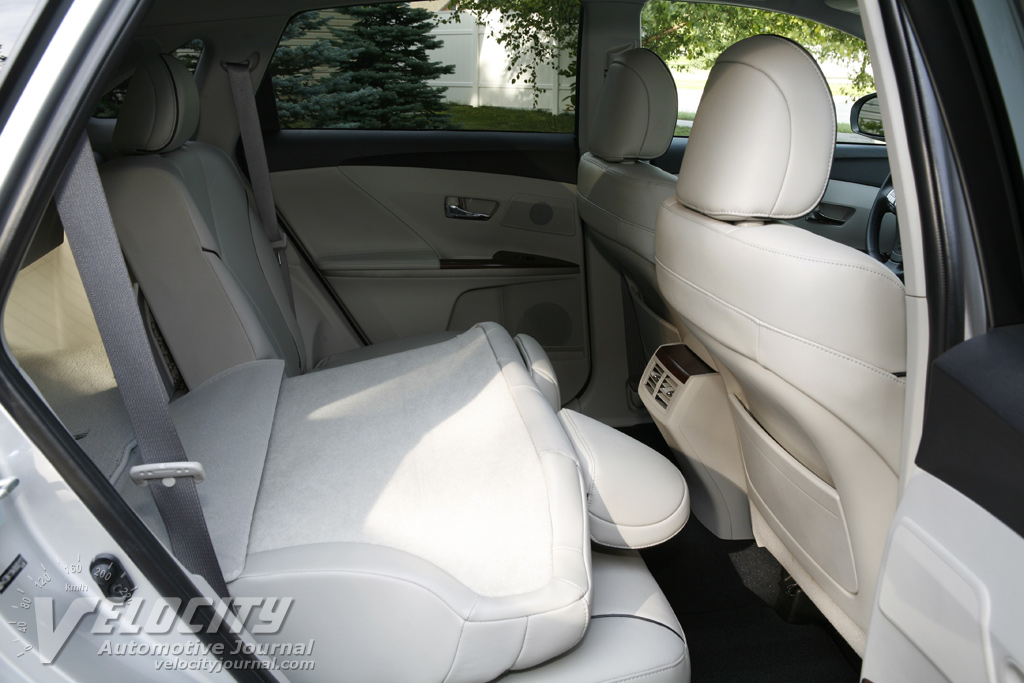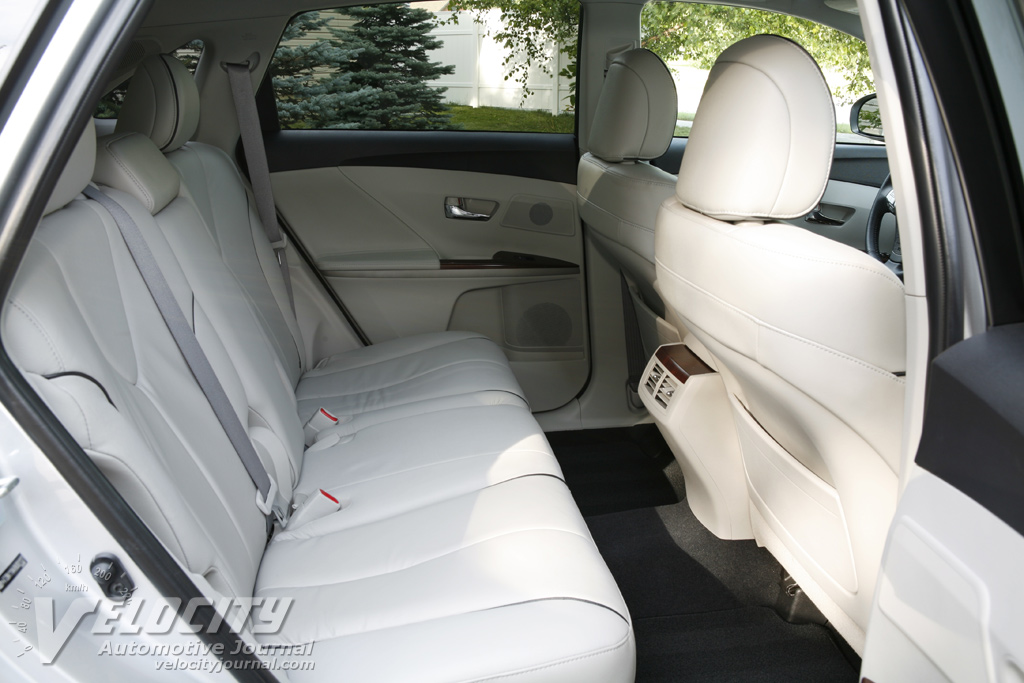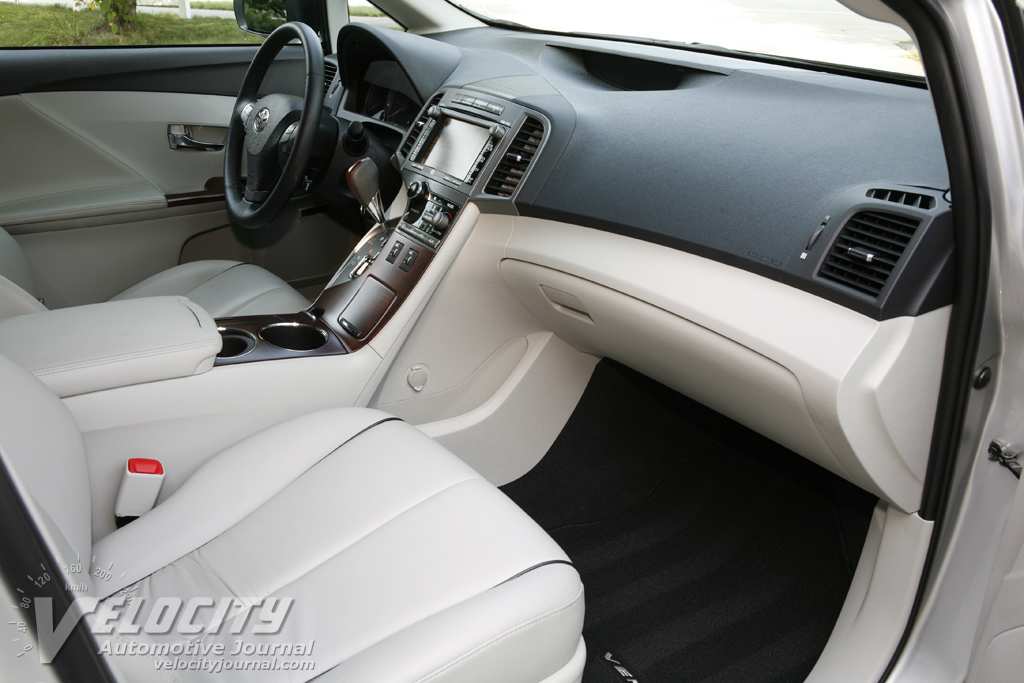2009 Toyota Venza AWD
09/01/2009
Shahed Hussain
Within Toyota's extensive range of crossovers and SUVs, the Venza is different than its brethren, resembling a station wagon in function, if not in styling. Of course, Toyota refers to the Venza as neither a wagon nor a crossover SUV, but as a car. Nevertheless, the Venza fits into the same niche as the Subaru Outback and the Volvo XC70: not exactly mainstream vehicles in the US, but with a loyal clientele. Can the Venza divert buyers from Subaru and Volvo, or will it siphon customers from crossover SUVs alternatives?
Toyota equips the Venza with 4-cylinder and V-6 engines, coupled to either FWD or AWD drivelines. The entry-level 2.7L/FWD Venza starts at $25,975; adding AWD bumps up the price to $27,425. Opt for the 3.5L V-6, and the base price rises to $27,800 (FWD) and $29,250 (AWD). Our test vehicle was optioned with the Comfort Package ($2,100), DVD Navigation ($2,590), Panoramic Glass Roof ($1,050), and Floor and Cargo Mats ($269). The total sticker price including the $720 delivery processing and handling fee was $35,979. We would probably delete the DVD Navigation Package and substitute an inexpensive portable navigation system instead. Fully loaded, the Venza tops out at just over $39K, where it bumps up against its corporate sibling, the Lexus RX350 and other luxury crossovers.
The Venza emulates the upscale RX350 in its interior design and materials, although the faux wood veneer on the center console and doors is decidedly unlike Lexus. Surface textures on the dashboard, upper door panels, and steering wheel hub disconcertingly resembles human skin. Within the instrument binnacle is a centrally-mounted 140-MPH speedometer with an 8,000 RPM tachometer on the left; smaller coolant temperature and fuel gauges are to the right. The Comfort Package adds audio and Bluetooth phone buttons on the leather-wrapped steering wheel. Included with the navigation package, the LCD touchscreen doubles as a display for the upgraded JBL surround sound audio system. The navigation system uses an intuitive tabbed interface and clearly labeled virtual buttons that simplify entering destination addresses or reconfiguring the map format. A monochrome LCD at the top of the dashboard displays climate control and trip computer data. Rotary knobs for the heated front seats are conveniently nestled below the climate control buttons.
The gated shift lever for the 6-speed automatic is conveniently mounted high up on the center stack, leaving room on the console for a storage bin to hold a mobile phone. Dual cupholders between the front seats are softly lit in green at night; additional cupholders are in the door pockets. A clever slotted compartment next to the shift lever holds a mobile phone or MP3 player while keeping it within easy reach. Under the shallow center console storage bin is a deeper compartment that has a 12V outlet and an audio jack for an MP3 player; an additional 12V power outlet is on the passenger side of center console.
Entering the Venza is effortless: just slide right into the driver's seat; no step up is required as with other crossovers. With the optional Comfort Package comes buttery-soft leather upholstery, which replaces the standard cloth seats. Despite superb overall comfort, the front seats offer minimal thigh bolstering, although they should accommodate a wide range of physiques. Both front seats have power adjustments; the driver's seat also includes power lumbar support. Rear passengers benefit from exceptional legroom that verges on limousine-like. Even with the dual-panel sunroof, front and rear headroom is adequate for 6-ft. tall occupants. The 60/40-split rear seats fold flat to reveal a substantial cargo area perfect for weekend trips to the hardware store or for hauling furniture. A lever on the left side of the cargo area conveniently folds down the rear seats. Several shallow bins under the cargo floor provide additional storage capacity; beneath the bins is a full-size spare tire.
Of the two available engines, the 182-bhp 2.7L inline-4 is the obviously fuel-efficient choice, but the 3.5L V-6 in our test vehicle motivates the Venza with more than adequate thrust. The DOHC V-6, shared with the Camry, cranks out 268-bhp @ 6,200 RPM and 246 lb.-ft. @ 4,700 RPM. Pouring out seamless turbine-like torque, the V-6 accelerates the Venza effortlessly around town or on the highway. Near the 6,200 RPM redline the V-6 sounds a bit strained, but never becomes intrusive. The all-wheel drive system diverts power to the rear wheels as needed, so torque steer is nonexistent, even at full throttle; traction on wet roads is reassuringly high. With a curb weight of just over two tons, the V-6 AWD Venza is no lightweight; even the lightest 2.7L/FWD model weighs in at a surprisingly hefty 3,760 lbs. Driven conservatively, we managed just less than 23 MPG in primarily highway driving, close to the EPA 25 MPG highway mileage rating (18 MPG city).
Both the inline-4 and V-6 are mated to a 6-speed automatic with identical gear ratios. Surprisingly, the V-6 has a slightly higher final drive ratio (4.398:1) than the inline-4 (4.356:1), certainly detrimental to fuel economy. Aside from the short first gear, the remaining five ratios are closely spaced together, which enhances shift smoothness; multi-gear kickdowns are handled with minimal delay or jerkiness. The manual shift mode clicks off seamless gear changes, but we rarely needed it in typical urban driving conditions.
Toyota uses the typical MacPherson struts for both front and rear axles, although there are dual lower links at the back. Brakes consist of 12.7-in. diameter vented front rotors and 11.7-in. diameter solid rear rotors. All Venza models share identical brakes and stabilizer bars. The brakes are progressive with decent pedal feel. Standard safety technology includes ABS and Stability Control.
Like many newer vehicles, the Venza dispenses with conventional hydraulic steering and substitutes a more fuel-efficient electrically assisted system instead. From a driver's perspective, the steering provides acceptable feedback, with minimal kickback. While Toyota makes no sporting pretenses, the Venza handles far better than one might expect, with surprisingly minimal body roll around corners. Turn-in response is better than average, no doubt aided by the fat 245/50R20 Michelin Latitude tires on 20-inch alloy wheels; 19-inch wheels are standard on the 2.7L Venza. On the interstates, the Michelins emit barely a hiss, while wind noise is pleasantly subdued. Although the beefy 5-spoke alloys complement the Venza's sporty stance, the added unsprung mass causes the suspension to thump sharply over broken asphalt. On less punishing roads, the Venza tracks straight and provides the relaxed driving experience expected from Toyota.
The Venza embodies the typical understated competence expected from Toyota. Like most other Toyotas, the Venza asks little, but rewards its owner with a soothing driving experience that few vehicles in its class can match. What may prevent the Venza from becoming a success is the competition from other Toyotas such as the popular Highlander, and to a lesser extent, the Lexus RX350. Furthermore, the Venza's vaguely wagon-like styling and premium pricing may put off some buyers, which is unfortunate, since this Toyota offers similar versatility and superior handling relative to its crossover competition. However, loyal Toyota customers will find no surprises in the Venza, and that is the highest praise we can offer.

